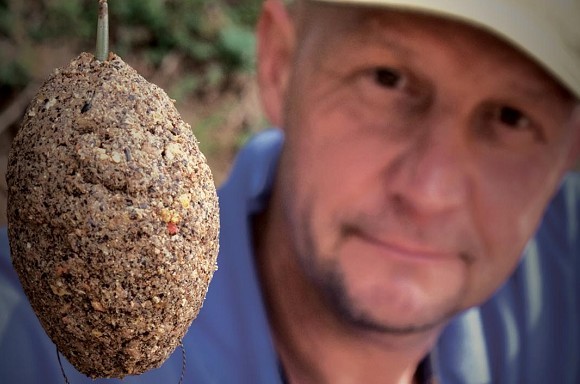
Why you should forget PVA bags...
The forgotten art of high-attract fishing - the Method feeder
Whatever tactic or method you see used most today will probably be a bigger edge in years to come, when a new trend will see said tactic become forgotten and underused. The practice of using the Method feeder for catching specimen carp is one great example: it’s a forgotten art of high-attract fishing!
Similar to popular solid PVA bag fishing, the hookbait can be concealed within a small, cast-able package of bait that can be dispatched to baited spots or the position of a showing fish. And what’s more, wet hands or a spot of rain won’t hinder you in loading your feeder and casting it out.
Method mix ingredients
1. The base
To begin any Method mix you will need a base to carry tasty extras and bind them together, as well as hold them to a feeder and you can make this base as cheaply or as expensive as you like. Stale bread put through a blender or the pet food Vitalin make great binders for a budget mix, or you can get purpose-made groundbaits which are a tad more expensive, although they can hold added flavours and attractors. Some of these mixes also contain fine particles of bait designed to rise from the feeder once on the lakebed.
2. Added extras
As the ball of groundbait around the feeder breaks down, it’s important to have some more substantial food items within the mix to maintain the attraction of feed for longer periods. Sweetcorn is without doubt one of the best ingredients for this. Not only does this provide a visual stimulus, but also provides a useful hookbait match for fake plastic corn, as well as a liquid attraction. Pellets, broken boilies and tinned tuna or chopped luncheon meat also make great
food additives.
3. Liquid attraction
To help draw fish to the tasty mouthful of bait around the feeder and vicinity of the hookbait, the inclusion of a liquid flavour or attractor will round the mix off perfectly. The liquid from tinned tuna or sweetcorn is useful and should not be wasted, with a splash of vegetable or sunflower oil, a cheap way of carrying the food signal through the water column. Hemp oil and liquid molasses are great natural attractors available from most tackle shops, as are purposely-design and flavoured liquid syrups.
Method mix tips and edges
1. Scalded pellet
As with any tactic it often pays to have an alternative from the norm and as far as Method feeders go, ‘scalded pellets’ provide exactly that! Simply add some pellets to a bucket or sealable container and top up with boiling water – just enough to cover the pellets. Seal the bucket with the lid and leave for an hour, after which time the pellets will have absorbed the water. This will make the pellets soft and bindable, some will retain their shape and some will become paste-like – perfect for the Method feeder!
2. Maintain the correct texture
The perfect texture and consistency of a good Method mix is one of being not too wet and sticky, but also not too dry and crumbly. To test the mix, squeeze a ball of mix between your hands – it should bind together firmly, but also crumb back to powder when you rub your hands together. The mix will gradually dry-out during your session and as this occurs it’s important to test the mix and add a little water or liquid flavour if required to maintain to correct consistency.
3. Disguise your presentation
Make up a number of groundbait balls using your Method mix at roughly the same size as that of the loaded Method feeder and dispatch to the same area after casting with a suitable large pouch catapult. As little as two or three extra balls of bait on the lakebed will not only increase the attraction to fish in the area, but will also build the confidence of these fish to feed on the bait. What’s more, this will also confuse any wily carp as to what may or may not be a ball of bait containing a baited hook.
Key points to Method fishing
1. Use an in-line Method feeder
Produced by the likes of Fox, Korda and Drennan, these in-line feeders are easy to use and attach to your terminal tackle. When loaded with a compact Method mix they are also aerodynamic and provide a virtually tangle free presentation – perfect!
2. Use a short soft hooklink
A short, soft hooklink will provide instant resistance from the weight of the feeder for greater hooking potential, but will also keep the hookbait close to the vicinity of the feed breaking down around the feeder. Carp simply can’t resist it!
3. Conceal the hookbait
With the feeder almost fully loaded, bring the hookbait around and onto the loaded mix and add a thin layer of mix over the top. The hookbait will now be momentarily protected from chod or light weed on the lakebed as the mix breaks down.










